The station master of the central Greek city of Larissa has been arrested and charged, police said, hours after a head-on collision between two trains that left at least 38 people dead.
The man, in charge of signalling, has been charged with causing mass deaths through negligence and causing grievous bodily harm through negligence, according to a police spokesman.
He has denied any responsibility for the crash, attributing it to a possible technical failure, the spokesman added.
A passenger train collided head-on with a cargo train last night in the country's deadliest rail crash in living memory.
At least 38 people died. Dozens were injured in the crash and the fire that followed.
Officials said the death toll is expected to rise further as temperatures in one carriage rose to 1,300 degrees celsius after it was engulfed in flames.
The collision occurred as the passenger train, heading to the northern Greek city of Thessaloniki from the capital Athens, emerged from a tunnel near Larissa.
Greece's transport minister has submitted his resignation.
"When something so tragic happens, we cannot continue as if nothing had happened," Kostas Karamanlis said in a public statement.
The Greek Prime Minister blamed human error for the country's worst rail tragedy.
"Everything shows that the drama was, sadly, mainly due to a tragic human error," Kyriakos Mitsotakis - who is seeking re-election this year - said in a televised address.
Speaking earlier, at the site of the crash, he said: "It's an unthinkable tragedy. Our thoughts today are with the relatives of the victims."
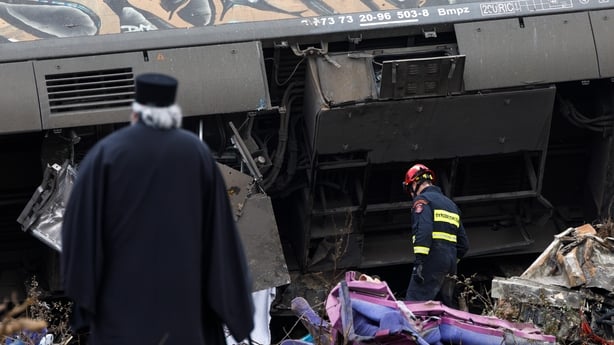
"There was panic ... the fire was immediate, as we were turning over we were being burned, fire was right and left," said Stergios Minenis, a 28-year-old passenger who jumped to safety from the wreckage.
A passenger who escaped from the fifth carriage told Skai TV: "Windows were being smashed and people were screaming. One of the windows caved in from the impact of iron from the other train."
Rescuers scoured through the smouldering mangled mass of steel and cranes lifted derailed passenger carriages, their windows blown out.
One carriage stood on its side at almost 90 degrees from the rest of the wrecked train, with others tilting precariously.
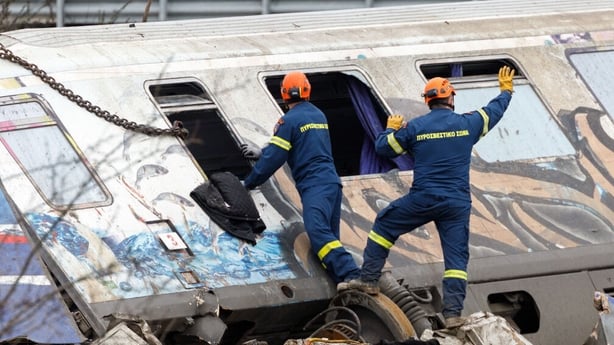
Fire brigade spokesman Vassilis Varthakogiannis said temperatures in the first carriage had reached 1,300 degrees celsius, making it hard to identify those trapped inside.
Flags flew at half-mast in Athens, as well as in Brussels, in a tribute to the victims of the crash, as the government declared three days of national mourning.
Many of the victims were thought to be university students on their way back from a long holiday weekend.
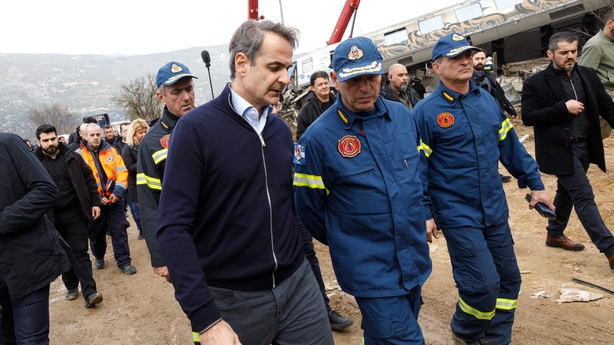
Government spokesman Giannis Oikonomou said the two trains had been running towards each other on the same track "for many kilometres" before the crash.
Yiannis Ditsas, head of the Greek railway workers union, told Skai television that automatic signalling at the site of the crash had not been working. There was no immediate official comment on this.
The passenger train was carrying 342 travellers and ten crew, while two crew were on the cargo train, according to Hellenic Train data.
Sixty-six of those injured were hospitalised, six of whom are in intensive care, a fire brigade official said.
In the central city of Larissa, where many victims of the crash had been taken, Nikos Makris sat on a path outside the hospital. His wife's sister was travelling in the first two carriages.
"She is missing. We have been waiting here since 2am," he said. "Now we are waiting to do a DNA test. We will be lucky to have a body to bury," he added.
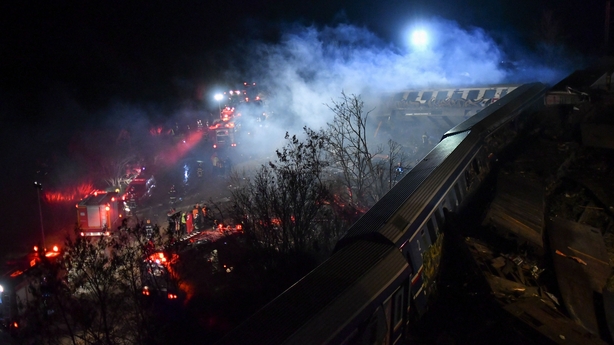
Survivors were evacuated to Thessaloniki, where one woman ran to embrace her daughter as she disembarked from a bus with other survivors.
"Mum don't, I'm hurt," the daughter said. Another woman, who was waiting there, said her child was not picking up the phone.
The head of the emergency unit in Larissa hospital, Apostolos Komnos, said most of the dead were young people, in their 20s.
Relatives, some in tears, others visibly angry, gathered on the hospital's ground floor to get information on the crash.
DNA tests will be carried out on victims that cannot be identified, the relatives were told.
President Katerina Sakellaropoulou cut short a visit to Moldova to return to Greece.
"Even at this moment, a life-saving operation is going on to help those who are on this death train," she told a news conference in the Moldovan capital Chisinau.
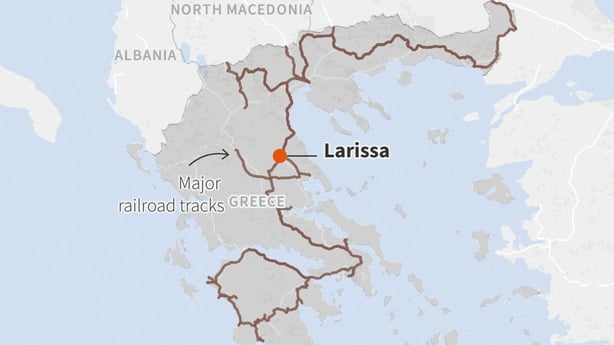
The cargo train had been travelling from Thessaloniki to Larissa.
Local media said the train left Athens last night at around 7.30pm local time (5.30pm Irish time).
The fire brigade said it was informed of the accident shortly before midnight.
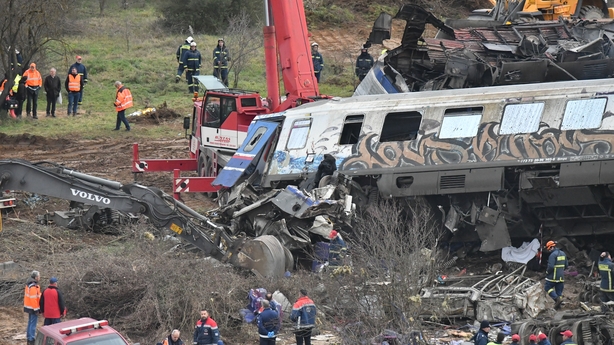
Greece sold railway operator TRAINOSE to Italy's Ferrovie dello Stato Italiane in 2017 as part of its international bailout programme, expecting hundreds of millions of euro to be invested in rail infrastructure in the coming years.
According to the Italian company's website, it is the main provider of rail transport for passengers and freight in Greece and runs 342 passenger and commercial routes a day.
Greece's ageing railway system is in need of modernising, with many trains travelling on single tracks and signalling and automatic control systems still to be installed in many areas.
A spokesperson for the Department of Foreign Affairs said there is no indication that Irish citizens have been caught up in the tragedy but the department "stands ready to provide consular assistance".
